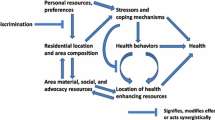Abstract
Objectives: The Maternal and Child Health Epidemiology Program (MCHEP), jointly sponsored by the Centers for Disease Control and Prevention (CDC) and Health Resources and Services Administration (HRSA), was evaluated in 1996–1997. As part of this evaluation, an effort was undertaken to identify components of effective MCH epidemiology, to examine their prevalence across participating states, and to assess differences with respect to these components between MCHEP and non-MCHEP states. Methods: A case-study evaluation was undertaken in which nine states (five MCHEP and four non-MCHEP) rated themselves on a benchmark questionnaire and participated in interviews conducted during site visits. At the completion of the evaluation, 16 components of effective MCH epidemiology in state health agencies were identified. The nine states were rated by the evaluation team on each component. Ratings across all states and between MCHEP and non-MCHEP states were compared. Results: There was a great deal of variability among the nine states with respect to the presence of the components of effective MCH epidemiology. Components on which the states appeared weakest overall were the presence of adequately trained personnel, the presence of adequate management information systems to support MCH programs, and whether the state health agency's epidemiologic unit understands the MCH planning cycle. States with an MCHEP assignee had a higher overall mean score than non-MCHEP states across all components. There were seven components on which the two groups of states differed. These include whether the MCH director is empowered in the state health agency, whether the state health agency has identified internal epidemiologic capacity building as a priority, and whether analytic leadership is available for MCH epidemiologic activities. Conclusions: Building and maintaining MCH epidemiologic capacity in state health agencies requires attention to a variety of factors. While the presence of an MCH epidemiologist is important, this is only one of many components that must be considered as both the federal and state governments seek to promote and institutionalize effective MCH epidemiology in state health agencies.
Similar content being viewed by others
REFERENCES
Institute of Medicine, National Academy of Sciences. The Future of Public Health. Washington, DC: National Academy Press, 1988.
Miller CA, Moore K, Richards T, Monk J. A proposed method for assessing the performance of local public health functions and practices. Am J Public Health 1994;84:1743–9.
Turnock B, Handler A, Hall W, Potsic S, Nalluri R, Vaughn E. Local health department effectiveness in addressing the core functions of public health. Public Health Reports 1994;109(5):653–8.
Mayer J, Konstant L, Wartman G. Typology of local health departments based on maternal and child health core functions. J Public Health Management Practice 1997;3(5):1–10.
Scutchfield FD, Hiltabiddle S, Rawding N, Violate T. Compliance with the recommendations of the Institute of Medicine Report, The Future of Public Health: a survey of local health departments. J Public Health Policy 1997;18(2):155–6.
Mays GP, Halverson PK, Miller CA. Assessing the performance of local public health systems: a survey of state health agency efforts. J Public Health Management Practice 1998;4(4):63–78.
Alciati MH. Building an infrastructure for data-based cancer control planning and intervention implementation. J Public Health Management Practice 1996;2(2):9–16.
Klein S, O'Connor P, Fuhrman J. Injury prevention capacity building in New York State: federal support played a significant role. J Public Health Management Practice 1997;3(6):17–24.
Geller S, Handler A, Kennelly J. Case-study evaluation. CDC/HRSA Maternal and Child Health Epidemiology Program (MCHEP). Final report prepared for CDC, Division of Reproductive Health, Pregnancy and Infant Health Branch, March 1998.
Handler A, Geller S, Kennelly J. Case-Study of CDC's State-Based Maternal and Child Health Epidemiology Programs (MCHEP). Presentation at the 126th Annual Meeting of the American Public Health Association, Washington, D.C., November 1998.
Rochat R, Atrash H, Handler A. Observations from the CDC: developing maternal and child health epidemiology capacity in state and local health departments. J Women's Health 1999;8(9):1135–9.
Merrian SB. Case study research in education: a qualitative approach. San Francisco, CA: Jossey-Bass, 1988.
Shaddish WR, Cook TD, Leviton LC. Foundations of program evaluation. Newbury Park, CA: Sage, 1991.
Smith ML, Glass GV. Research and evaluation education and the social sciences. Englewood Cliffs, NJ: Prentice-Hall, 1987.
Centers for Disease Control. Guidelines for evaluating surveillance systems. MMWR 1988 (May);37(S-5).
Grason H, Guyer B. Public MCH program functions framework: Essential public health services to promote maternal and child health in America. Blatimore, MD: Johns Hopkins University, Child and Adolescent Policy Center, 1995.
Rocheleau B. Evaluating public sector information systems. Satisfaction versus impact. Evaluation Program Planning 1993;16:119–29.
Thacker SB, Stroup DF. Future directions for comprehensive public health surveillance and health information systems in the United States. Am J Epidemiol 1994;140(5):383–97.
Farel A, Peoples-Sheps MD, Schwarte E, Waller C. Southeastern Title V program staff perceptions of state-level maternal and child health assessment skills. Maternal Child Health J 1997;1(4):267–72.
Handler, A. Building MCH data capacity through partnership: federal-academic-state partnership. Presentation at the 1999 Maternal, Infant and Child Health Epidemiology Workshop: Building Data Capacity in Maternal and Child Health, Atlanta, Georgia, December 9, 1999.
Association of Maternal and Child Health Programs and City-MatCH. National Action Agenda: Building Data Capacity for Maternal and Child Health, March 1999.
U.S. Department of Health and Human Services, Public Health Service, Public Health Functions Project. The public health workforce: An agenda for the 21st century. Washington, DC: Author, 1997.
Author information
Authors and Affiliations
Corresponding author
Rights and permissions
About this article
Cite this article
Handler, A., Geller, S. & Kennelly, J. Effective MCH Epidemiology in State Health Agencies: Lessons from an Evaluation of the Maternal and Child Health Epidemiology Program (MCHEP). Matern Child Health J 3, 217–224 (1999). https://doi.org/10.1023/A:1022329522752
Issue Date:
DOI: https://doi.org/10.1023/A:1022329522752




